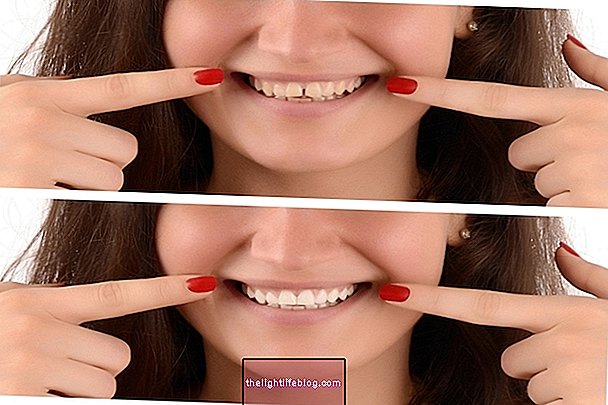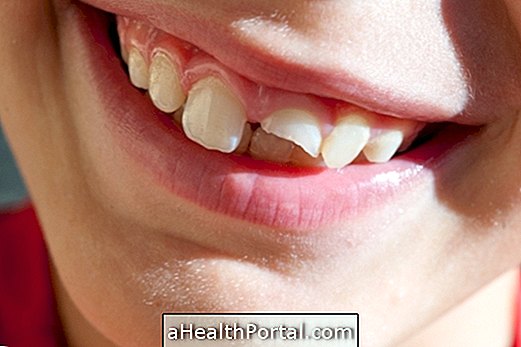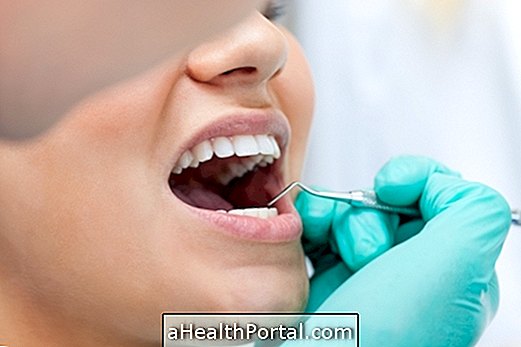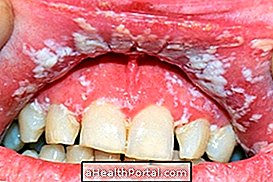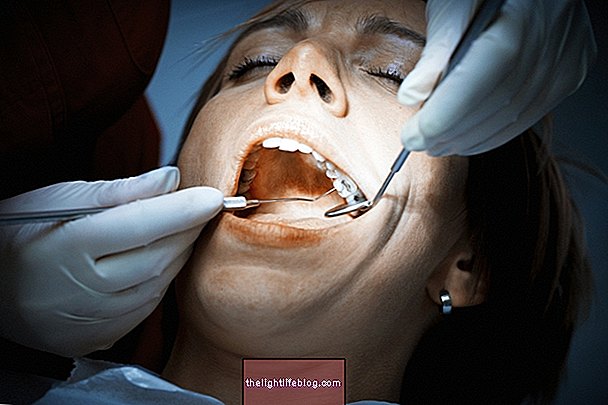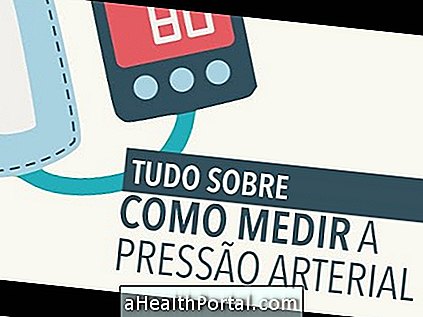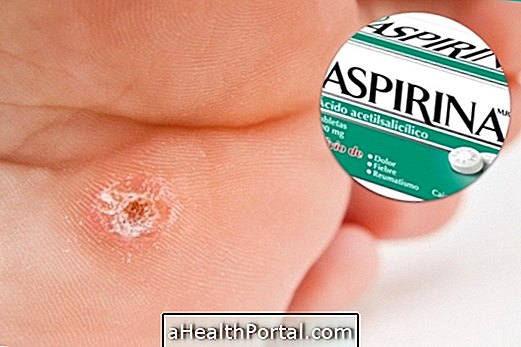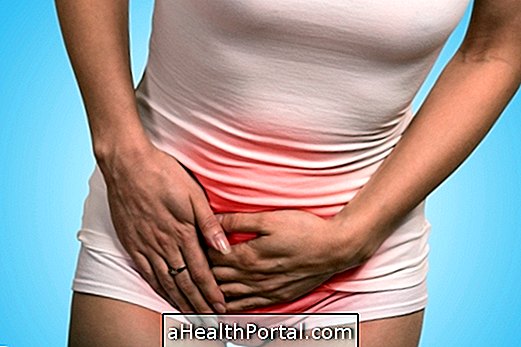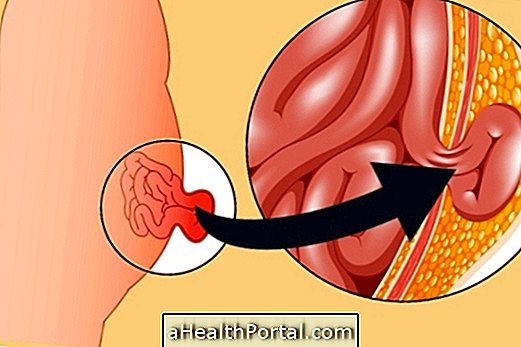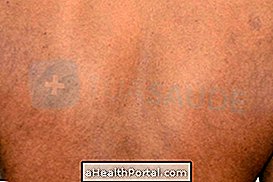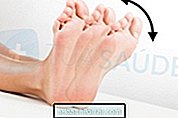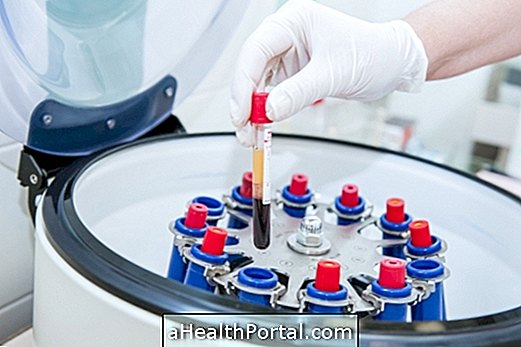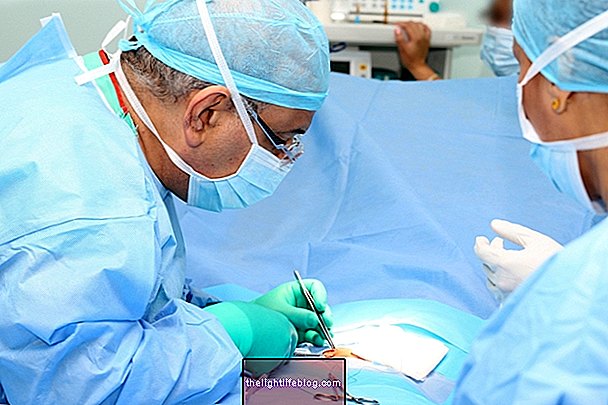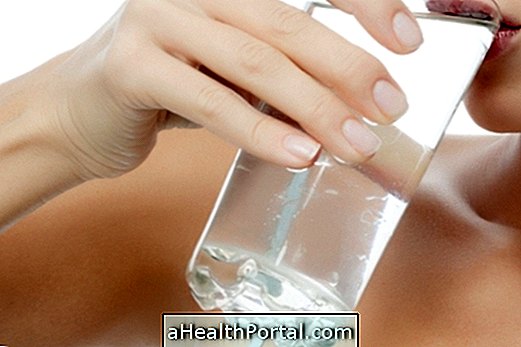The treatment to eliminate cavities, is usually done through a restoration, which is performed by the dentist and consists of the removal of the caries and all the infected tissue, after which the tooth is covered with a substance that can be composite resin, ceramic or amalgam.
Currently, there are 2 ways to perform this treatment: with anesthesia and a drill to scrape all caries or with a gel called Papacárie, which manages to soften the caries and eliminate all the injured tissue, in a simple, fast and painless way, being a excellent option for those who are afraid to go to the dentist.
However, in cases where the caries is very deep and reaches the pulp of the tooth, it may be necessary to carry out a root canal, which is more invasive and requires more sessions at the dentist.

When to do the treatment
The restoration of the tooth is done by the dentist, after making the diagnosis to the tooth and detecting the presence of a cavity.
The person may suspect that he has tooth decay if he feels pain, sensitivity to cold or hot, or if he observes that there is a small hole, a small black spot or a dark spot on the tooth and, to confirm it is necessary to visit the dentist.
To make the diagnosis, the dentist can observe the teeth with a small mirror and some sharp instruments, to check if there is local pain and it may also be necessary to take an x-ray to assess the health of the gums and the root of the teeth. See how the panoramic radiography of the jaw and jaw is performed.
How tooth restoration with caries is done
To make the restoration, the dentist:
- Administers anesthesia, depending on the case;
- Removes the part of the tooth that is damaged, with the help of a dental drill, laser or papacy gel;
- Clean the decayed tooth with a small curette (if using the gel) or scrape the area with the little motor;
- Put resin to fill the hole;
- Sand the resin to adjust the height of the tooth.
Currently, the restoration is made with resin, which is a white tooth-colored material, which is practically imperceptible and safer than older restorations. These were made with a gray substance called amalgam, which contained mercury in its composition and, therefore, has no longer been used. Find out which materials are most used in tooth restoration and how to maintain them.
When the tooth is very affected, and the lesions are deeper and reach the pulp of the tooth, it may be necessary to resort to root canal treatment, also known as filling, which is a more expensive and prolonged treatment, as it requires several sessions and requires also a restoration at the end.
What you can feel after treatment
If the treatment is carried out with Papacárie gel, there is no need for anesthesia and, therefore, the person leaves the office without feeling discomfort. However, if the dentist opts for anesthesia and using a drill, the effect of anesthesia can last for a few hours and the person should feel their mouth numb, tingling and have difficulty speaking and eating. Know what to do for anesthesia to pass faster.
Why it is important to remove caries
It is important to restore the tooth whenever the tooth is decayed, because caries can pass to other teeth and also to other people through kissing and sharing glasses and cutlery, for example.
In addition, caries increases in size and can allow the installation of viruses, bacteria and food that can aggravate the situation, even favoring the need for other treatments such as root canal treatment, also known as filling, or even withdrawal. of the tooth. If the person loses the tooth, it is necessary to place a prosthesis in place or use a denture.
Test your knowledge
Take our online test to test your knowledge of oral health:
- 1
- 2
- 3
- 4
- 5
- 6
- 7
- 8
Oral health: do you know how to take care of your teeth?
Start the test


It is important to consult the dentist:
- Every 2 years.
- Every 6 months.
- Every 3 months.
- When you are in pain or some other symptom.

Floss should be used every day because:
- Prevents the appearance of cavities between teeth.
- Prevents the development of bad breath.
- Prevents inflammation of the gums.
- All of the above.

How long do I need to brush my teeth to ensure proper cleaning?
- 30 seconds.
- 5 minutes.
- Minimum of 2 minutes.
- Minimum of 1 minute.

Bad breath can be caused by:
- Presence of cavities.
- Bleeding gums.
- Gastrointestinal problems like heartburn or reflux.
- All of the above.

How often is it advisable to change the toothbrush?
- Once a year.
- Every 6 months.
- Every 3 months.
- Only when the bristles are damaged or dirty.

What can cause problems with teeth and gums?
- The accumulation of plaque.
- Have a high sugar diet.
- Have poor oral hygiene.
- All of the above.

Inflammation of the gums is usually caused by:
- Excessive saliva production.
- Accumulation of plaque.
- Tartar build-up on teeth.
- Options B and C are correct.

In addition to the teeth, another very important part that you should never forget to brush is:
- Tongue.
- Cheeks.
- Palate.
- Lip.
Can the pregnant woman treat cavities at the dentist?
Pregnant women have a higher risk of developing gingivitis and cavities due to the common hormonal changes of this phase and, therefore, it is important to go to the dentist at least twice during pregnancy, to assess oral health in order to treat any cavities before there is complications. Check out 5 precautions to fight cavities and gingivitis in pregnancy
Dental treatments in pregnancy can be done in any trimester, however, it is recommended that, whenever possible, be done in the second trimester, especially if it is the case of treatment for cavities or other treatments that require anesthesia or that directly affect the gum. This is because, it is in the first trimester that the highest rate of organ formation occurs in the baby and, therefore, dentists keep these types of treatments for cases of greatest emergency, during this period.
In the third trimester, there is a greater risk of side effects, such as a marked decrease in blood pressure, since the baby is larger and may end up putting pressure on the organs of the pregnant woman. During this period, if any type of treatment is needed, the dentist should avoid long treatment sessions.
In the case of papacy gel, treatment can be done in any trimester of pregnancy.
How to treat caries without anesthesia and without pain

An excellent way to eliminate caries is to use the gel called Papacárie, which is made from papain, found in papaya, which completely removes caries from the tooth without requiring anesthesia, nor use the drill to scrape the tooth.
This treatment with Papacárie gel must also be performed in the dentist's office, because it must be applied inside the decayed tooth, and must act for about 1 minute. Then, the place must be carefully cleaned by the dentist, using a manual instrument called a curette, which removes caries and injured tissue, without any pain or discomfort. Then, the dentist should cover the tooth with a 'clay' of resin so that it appears to its original shape.
This new treatment for caries with Papacárie gel is excellent for the treatment of children and the elderly, who have more difficulty in supporting the treatment commonly performed by the dentist, but can be used at all ages, including pregnancy.
Watch the following video and learn how to prevent tooth decay:

Was this information helpful?
Yes No
Your opinion is important! Write here how we can improve our text:
Any questions? Click here to be answered.
Email in which you want to receive a reply:
Check the confirmation email we sent you.
Your name:
Reason for visit:
--- Choose your reason --- DiseaseLive betterHelp another personGain knowledge
Are you a health professional?
NoMedicalPharmaceuticalsNurseNutritionistBiomedicalPhysiotherapistBeauticianOther
Bibliography
- SANO Jean, et al .. Local dental anesthesia and embarazo. Acta Odontológica Venezolana. 39. 2; 2001
- FERNÁNDEZ Ofelia, et al .. Dental care in the embarazada mujer. Infant maternal investigation. 2. 2; 80-84, 2010
- LEE Ji, et al. Use of local anesthetics for dental treatment during pregnancy; safety for parturient. Journal of Dental Anesthesia and Pain Medicine. 17. 2; 81-90, 2017
